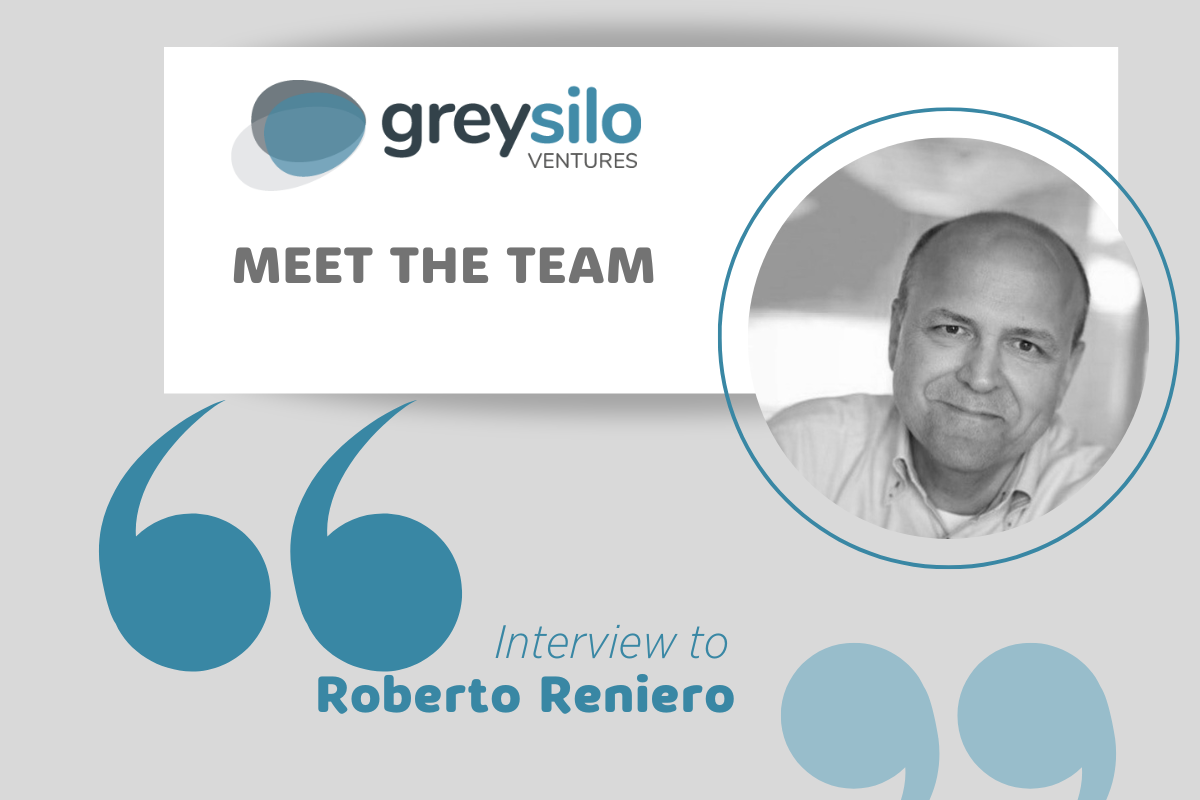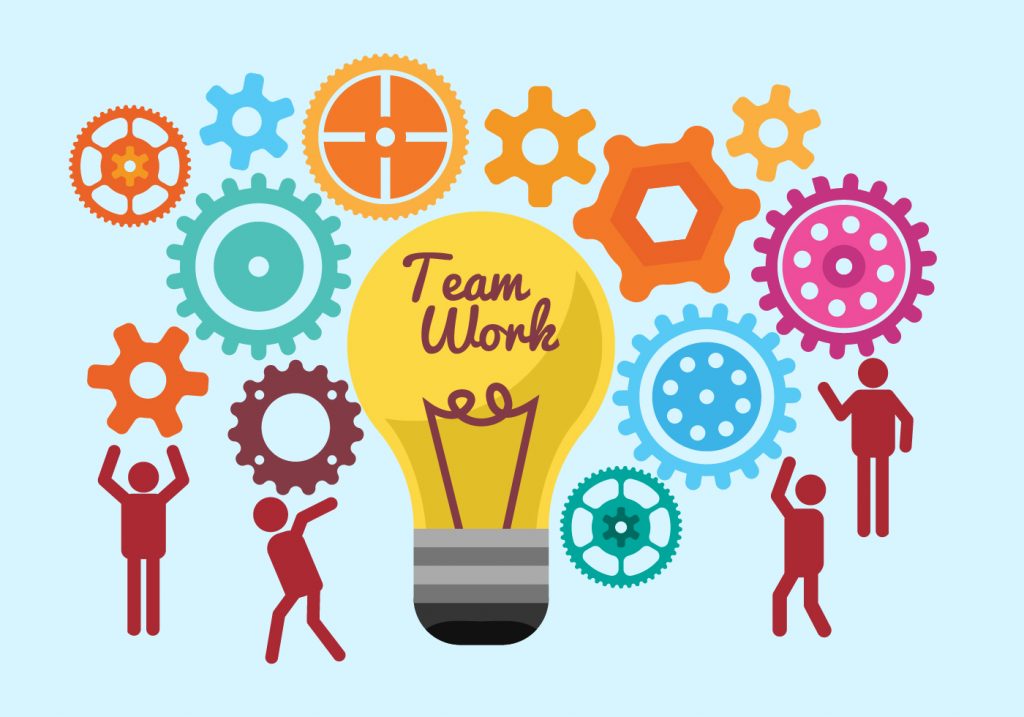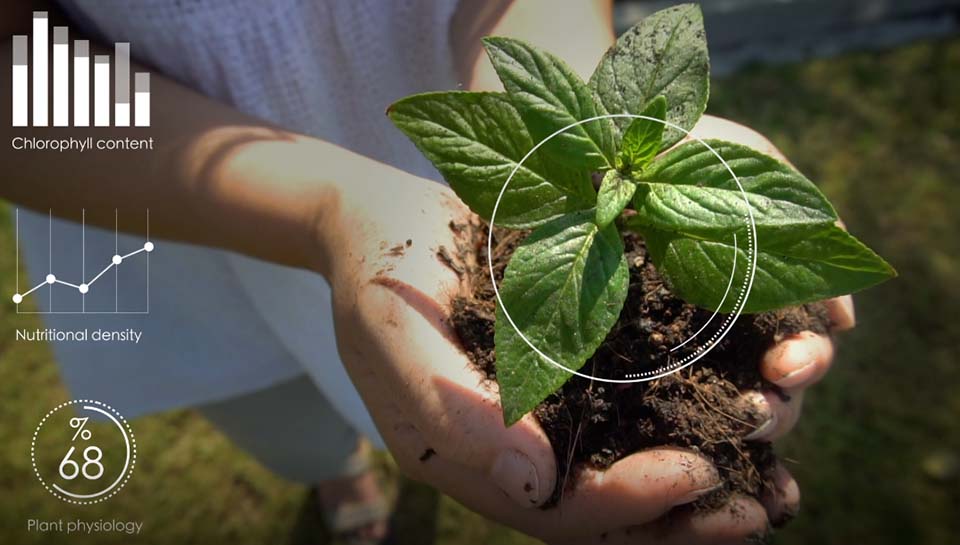
Consumers, taste, innovations and team work: how to enhance food-tech startups
Roberto Reniero’s point of view
Grey Silo Venture presents itself through the experiences and points of view of the members of the advisory board, an integral part of the governance of each Venture Capital fund, with the task of supporting the scouting, selection, and definition of the investment proposals from the very beginning. Our CVC team stands out for its mix of professionalism and transversal know-how, both in the food and R&I sectors.
The first protagonist of our meetings is Roberto Reniero who, during his 25-year career at various Nestlé research centers, has accumulated significant experience in various fields such as management, scientific research, and product development in different parts of the world, including Europe, Asia and North America.
EVERYBODY CAN DO GREAT! IT IS THE PEOPLE WHO MAKE THE DIFFERENCE

We know that in innovative companies people are often the element that makes the difference. How complex can it be for an innovative start-up or a corporate to create, manage and expand its team in a growth path that meets the needs of business evolution while maintaining the right balance in terms of skills and human relationships?
The management of human resources and team building are truly fundamental and concrete issues. Without valuable people, companies can’t do anything valuable. In my experience, I have often had the opportunity to move to various parts of the world, where every three years I had the opportunity to start a new job together with a new team that I did not know. Each change naturally required an initial part of observation, to understand how the team was organized and what were the motivations and behaviors adopted by all the members.
What aspects did you focus on the most?
I have always tried to focus on complementarity and diversity, trying to understand how the qualities of each could be complemented by those of another person in the most natural way possible. Creating the right mix of knowledge and skills is not always easy, but the true strength of any kind of organization of people is always produced by the team and not by single individuals, no matter how talented and capable they may be.
When people are enabled to work peacefully, to express themselves freely and to feel involved in an honest way, then everything becomes easier. It is important to be able to build a team with well-blended and diversified skills in order to broaden the points of view as much as possible.
Does this also apply to startups?
Startups typically arise from an idea of one or two founders, rather than from a real teamwork, but one of the real secrets to evaluate the potential of a startup is to look at how the team works and how their members interact both internally and externally. The initial business idea can be interesting, brilliant, even revolutionary, but without a cohesive and complementary team it will be difficult to achieve success.
Is there a secret ingredient to achieve this?
There is no real simple recipe, but if I had to summarize it in a slogan I would say: “everybody can do great!”: each person has the potential to contribute and share their added value with the team. The real task of founders and managers is to recognize it and to put everyone in a position to be able to demonstrate it, through inclusiveness and involvement.
EVOLUTIONARY SCENARIOS OF AG-TECH

You also have a master’s degree in agricultural sciences in your curriculum. What prospects do you imagine for AG-Tech? How can it help to make the food we eat healthier, safer and more sustainable?
I think it is necessary to understand how to move from a production model still based on the extensive paradigm to a different model, more sustainable and respectful of natural resources. This certainly does not mean abandoning agriculture, but using the available knowledge, which is getting deeper and deeper, to better understand the real needs of each plant in its given environmental context.
What added value can innovation bring in this area?
Without a doubt, the possibility for farmers to make decisions based on data. AG-Tech is based on the concept of “personalization” of the technique with respect to the specific needs of each context: to do this, one of the truly fundamental things is the collection, processing and use of data. The final goal is always the same: to produce more and better, while consuming fewer resources.
Can you give us some examples?
In Israel, for example, thanks to huge investments in technology and research, today it is possible to cultivate many varieties of plants even in arid and desert areas, thanks to innovative irrigation systems and humidity and temperature control systems that allow extremely efficient cultivation even in inhospitable areas. It is said that water is such a precious commodity that every drop is used at least twice. Other interesting elements in my opinion are all the technologies that allow vertical farms and urban farming, which, for example in places like Singapore, are continuously developing to increase food production, despite the lack of space and land on which to cultivate, also allowing targeted use of water resources, energy and reducing the use of pesticides and herbicides. Finally, precision agriculture, which not only allows for more sustainable agriculture and less use of chemical fertilizers, but it also guarantee an important economic saving for companies and greater overall efficiency for the company.
What are the obstacles still to be overcome?
Innovations are not always simple to apply to farms, also due to a difficulty in making clear that this type of tools are not an epochal upheaval of the traditional work of the farmer, but only tools that allow them to do the same work that farmers have always done in a faster, more efficient, reliable, sustainable, and profitable way. It is, first of all, a cultural issue and therefore it is necessary to accompany these innovations with adequate awareness-raising and training actions.
TASTE AND SIMPLICITY ALWAYS IN THE FOREGROUND: EVEN FOR INNOVATIVE INGREDIENTS

You have been deeply involved in the world of product development throughout your career, how do you judge the new generation ingredients that are ready to enter in the market? Do you really think they have the potential to guarantee more authenticity and sustainability to the food system?
The first question that I ask myself when faced with issues regarding innovation, or the attempt to innovate, has always been: “What problem am I trying to solve? Why can my idea be attractive to an investor or to the public?”. Sometimes it can be useful to create something completely new that does not exist yet in the market, but this is not mandatory. Often you can simply renovate by improving the quality of a product, for example, in the case of food, providing alternatives that are equally tasty but with less fat and healthier.
What must be the real “killer features” that ingredients must have and what fundamental principles of the food industry they must undergo to achieve success?
An unwritten law of the food sector that also applies perhaps even more so to innovative ingredients, reminds us that: “taste is king”. Taste is the essential element that individuals judge when they have to buy food. If the food does not taste good, it will hardly be purchased continuously, regardless of the marketing strategy that promotes it. In my work experience I have come to terms with this unwritten law while working in research and development in various sectors. Another fundamental component for the business idea is convenience: new products or new services must be simple and easy to use.
How important is the cultural aspect?
It is very relevant. It is always necessary to consider also the familiarity of the ingredient. Let’s think about the case of insects, which were considered as a potential innovative and breakthrough product for the food industry. The problem, however, is that for Western culture insects are not still perceived as a food ingredient, as a healthy or desirable food. It is not a culturally familiar element but an almost alienating one.
Of course, cultural perceptions can change, but there is always a significant dose of uncertainty, and it usually takes a very long time for cultural perception to adapt. Another example might be what happened with GMOs in Europe: various studies had shown that the products were considered safe, but the leap to accept the genetic manipulation of familiar ingredients was too great to be accepted by consumers.
In the food sector, simplicity also pays for another reason: the more a product deviates from the standard and the “normality” perceived, the longer it will take to from a regulatory point of view to be ready for the market. We can fall in love with innovative products, but if the commercialization of the products will take too many years, the business idea is likely to be wrecked.
What advice would you like to give to a startup operating in FoodTech?
The most practical advice I can give is to put yourself in the consumer’s shoes, to know them and create a bond, a true empathic relationship to understand exactly which consumer’s needs they want to satisfy. Consumers will not necessarily and spontaneously tell companies what they want or what they lack, but if startups listen to consumers and establish a link, they can discover and learn a lot of useful things that will be the foundations on which they will build future innovations.
HOW CONSUMERS CHANGE BETWEEN TRENDS AND SOCIAL NETWORK

Roberto, you come with a long career experience in an important multinational that represents an important observatory in the food sector. How do you interpret these global trends and how do you see the evolution of the sector in the coming years?
Trends and tendencies are certainly an important component in the work of a large company in the food sector. In my experience I have worked mainly in the R&I sector, where it is essential to quickly understand new trends that could take hold in the market. We live in a ‘liquid’ era and therefore it is vital to understand how these dynamics develop, also by distinguishing transient phenomena from trends that will then have some long-term repercussions in the market.
Let’s start with trends …
There are some important elements that have emerged in recent years, including the consumption preferences of new generations: Millennials, but even more so Gen. Z. certainly have a new focus on the issues of sustainability and the health of planet Earth, compared to previous generations. From this new sensitivity, a series of actions that companies or startups have already begun to implement for some time have been derived: the reduction of packaging, the use of recyclable materials, the zero-kilometer or locally produced, a more focused attention to the reduction of food waste or to the concepts of reutilization and circular economy, but also the proliferation of vegetarian or vegan products, less harmful from an environmental point of view or ethically more acceptable than traditional meat. In my opinion, this is an example of a trend correctly acknowledged by companies, which it is destined to establish itself more and more in the future, whilst still paying attention to the aspects of food safety and nutrition.
And then there is the phenomenon of the moment …
There are two aspects that I would like to emphasize. The first is that it is not always possible to generalize. We must remember that the various trends could be translated differently from country to country, even from company to company, because they are always closely linked also to cultural and social dynamics. Then there are also more contingent elements, which are very difficult to predict, such as the new consumption needs that have developed with the pandemic: we have seen new consumer requests develop following the lockdowns, but we have also witnessed an incredible acceleration in the demand for healthiness, transparency of information and well-being on the part of consumers, trends that were already present, but which have intensified in a very relevant way.
Do the new dynamics of communication also play a role in this?
Certainly, a major accelerator with respect to the dynamics of trends and buying tendencies are social networks, which have amplified the effect of many trends in a viral way, both due to influencers and thanks to the simple interaction between people online. However, I would like to underline a concept: trends are one thing and fashions that often exploit them are another, characterized by greater volatility and superficiality.

